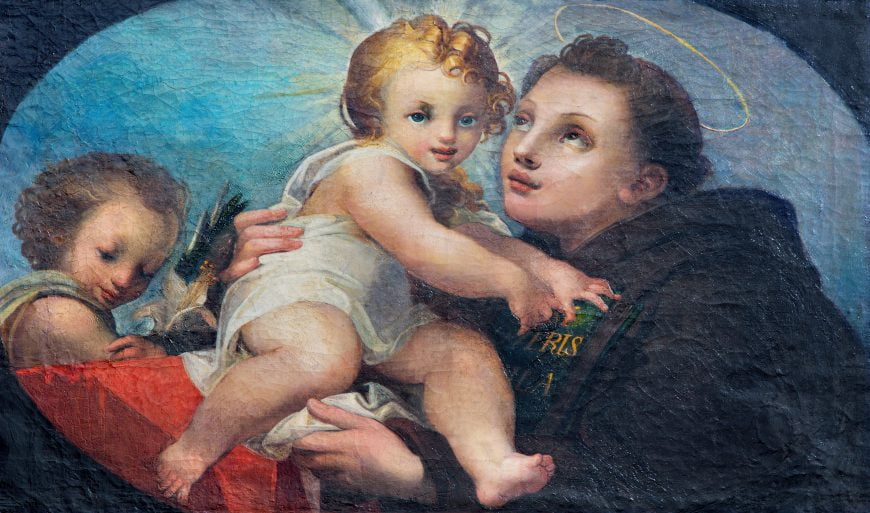St. Anthony of Padua (1195 – 1231)
The Wonder-Worker of Padua, The Evangelical Doctor, and The Hammer of Heretics
Doctor of the Church, Franciscan priest, mystic, and visionary born Fernando de Bouillon in a palace in Lisbon, Portugal. Originally an Augustinian, he later transferred to the Franciscans and took the name of Anthony when he entered the Friars Minor. As a new Franciscan, he proved to be very erudite. His preaching and miracles drew thousands of people wherever he went in Europe. His sermons were noted for their eloquence, fire, and persuasiveness. Anthony’s contemporaries called him “Hammer of Heretics” and the “Living Ark of the Covenant.” He healed the sick and is credited with a dozen resuscitations of people from the dead.
St. Anthony also possessed unusual spiritual gifts such as exorcizing demons, reading hearts, the ability to predict the future, bilocation, and the quality of agility, the mystic ability to transcend time and space. One of the best documented cases of this latter phenomenon was when he once took a trip from Padua, Italy to his home town of Lisbon in Portugal within a day’s time-frame. His father had been arrested and accused of murdering a young noble-man in Lisbon, Portugal. When the matter was made supernaturally known to St. Anthony, he asked his superior’s permission to leave the monastery in Padua where he lived to travel on foot to Lisbon. While enroute, he found himself miraculously transported to Lisbon in time to speak in defense of his father. He convinced the authorities to travel to the victim’s grave and is said to have commanded the corpse, in the name of God, to speak out. According to the story, the corpse sat up and declared his father guiltless. When Anthony reappeared in Padua, he had been absent two nights and a single day.

On one occasion, a visitor saw Anthony enraptured and holding the infant Jesus in his arms. The two seemed to be surrounded by a heavenly mist. The report of this vision inspired many depictions of the saint after his death. He is often shown in art holding the infant Jesus in his arm because of this famous apparition with the Christ child. At the actual time of his death, the saint was described as being wasted, his face haggard by continuous fasting and unceasing labors, and he was “enfeebled to the verge of decrepitude.” However, after death his body assumed the incomparable beauty of youth. And, like the tongue of St. John Nepomucene (c. 1340 – 1393), this great preacher’s tongue was found to be incorrupt, and still red in color. It is also interesting to note that after his death and up until the time of the Protestant Reformation, apparitions of St. Anthony of Padua were reported more frequently than those of any other saint, except the Virgin Mary. St. Anthony is often implored to find various lost objects. He was canonized in 1232 by Pope Gregory IX and declared a Doctor of the Church in 1946 by Pope Pius XII.
Join us in praying the Novena to St. Anthony, concluding June 13th!

